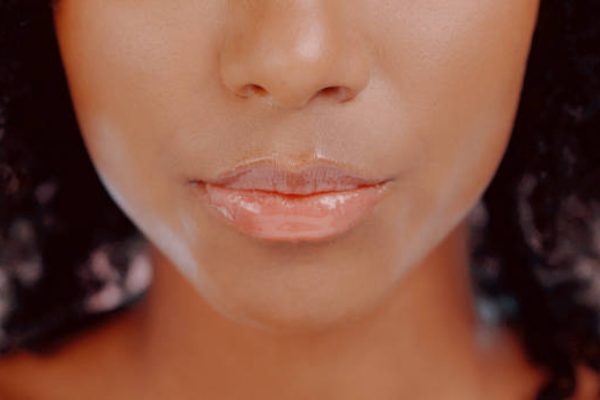Exfoliation: Benefits, How to Do It and More
When taking care of your skin, exfoliation is a great ally to leave anyone with a baby complexion. This practice performs a differentiated cleansing, removing dead cells and renewing the appearance of the skin’s surface. But for it to work, it’s important to know how to exfoliate.
With this in mind, we prepared this article with tips on how to exfoliate your face and body. Furthermore, here we also answer the main questions on the subject, so if you have questions, continue reading to find out everything you need to know about this skin treatment!

What Is Skin Exfoliation?
Exfoliation is a treatment that renews skin cells, eliminating dead ones and stimulating the production of new ones. It can be done chemically, using products with active exfoliants, or physically, with a mixture of granules in creams or oils.
The procedure acts on the most superficial layer of the skin, where dead cells are located. And it is done with the application of exfoliating products, which may or may not be massaged into the skin, ensuring good peeling of dead cells. The result is smooth, soft-touch skin.
What Are the Benefits of Exfoliation?
In addition to renewing the skin’s surface, exfoliation also cleans and unclogs pores, preventing the formation of blackheads and pimples and allowing treatment products to penetrate more easily. Here are some other benefits that exfoliation promotes on the skin:
- Evens out skin tone: Exfoliation removes dry, dead skin, reducing dark spots, hyperpigmentation, rough textures and acne scars. Thus, the skin becomes smoother and more uniform.
- Stimulates blood circulation and lymphatic drainage: the movements made during exfoliation promote improved blood circulation and stimulate lymphatic drainage. Detoxifying the skin and leaving it healthier.
- Stimulates collagen synthesis: improves skin texture, leaving it firmer and younger-looking.
- Leaves skin glowing and healthy-looking: with cell turnover, the skin becomes brighter and more luminous, as fresh, young cells are always on the surface.
- The skin has a pleasant touch: with the removal of dead cells, the skin has a softer and silkier touch.
To obtain all these benefits, it is important to exfoliate your skin regularly, repeating the procedure whenever you notice skin that is dull and has a natural shine or feels rough and blemished. Exfoliation is recommended for all skin types, whether normal, combination, oily, dry or sensitive.
What Are the Types of Exfoliation?
Exfoliation can be physical or chemical, with specific products being used for each of these types. The difference between them lies not only in the products, but also in the way the procedure is carried out. See below the characteristics of these two types of exfoliation:
- Physical exfoliation: made with creams, gels or soaps that contain small granules in the composition. A massage is then performed, which causes these microspheres to rub against the skin, promoting the removal of dead cells and impurities.
- Chemical exfoliation: uses products based on salicylic, glycolic or retinoic acids, which perform a microscopic exfoliation, peeling off dead cells. In this case, there is no need to massage, just let the product act for a while.
Exfoliation can be done by professionals or even by yourself at home, during the shower, for example. In fact, there are several exfoliating options on the market.
How to Exfoliate?
The procedure is carried out in aesthetic or dermatology clinics. However, exfoliation can also be done at home, as long as the appropriate products are used. Check out how to exfoliate your face and body below to have healthy, soft skin!
How to Exfoliate Your Face
Because it is more sensitive than the skin on the body, the face needs special care. To prevent the skin from being attacked, the microspheres in exfoliating products for the face are gentler, as are the movements during application. See below a step-by-step guide on how to exfoliate your face:
- Wash your face with facial soap.
- Apply the exfoliant to damp or dry skin, following the instructions on the product packaging.
- Make circular movements all over your face, paying more attention to your forehead, nose and chin (oily areas). Avoid applying too much pressure to avoid damaging the skin.
- Rinse your face and dry.
- Finish by toning and hydrating your skin however you prefer.
Repeat the procedure, at most, twice a week, in the case of drier skin, once a week is enough.
How to Exfoliate Your Body
To exfoliate your body, you need to have damp skin. Therefore, it is best to do the procedure when you are in the shower. This makes it easier to apply and remove the product. Check out a step-by-step guide below that will help you when exfoliating your body:
- With your body damp, apply the exfoliant to the roughest areas, such as heels, knees and elbows.
- Make light and smooth circular movements, without putting too much pressure.
- Then move on to the other parts, such as arms and torsos, repeating the same movements.
- Leave the product to act on the body for a few minutes.
- Rinse your body completely with warm water. Never use very hot water!
- If you prefer, apply a moisturizing bath oil.
- With your skin already dry, moisturize with a cream of your choice.
Body exfoliation can be done once a week. To ensure that the procedure has a good result, you need to use suitable products.
Can You Exfoliate Your Skin Every Day?
No. Even though it is a beneficial practice, it can hurt or sensitize the skin if repeated too frequently. This is because exfoliation is an abrasive process and some exfoliating agents present in products can even cause small cuts in the skin that can become infected.
The ideal is to exfoliate once a week, and those with dry or sensitive skin can increase the interval to every 2 weeks. Those with oily skin can do it up to twice a week to avoid blackheads and pimples. People with acne-prone skin should consult a dermatologist first.
Does exfoliating your face remove blemishes?
Yes. Exfoliation can help reduce blemishes and marks caused by pimples and acne. This is due to the cell renewal that the procedure promotes, removing the layer of dead skin. Therefore, dark spots and hyperpigmentation can be minimized with periodic exfoliation.
Furthermore, exfoliating lightens the skin in general, due to the removal of impurities that end up giving the skin’s surface a darker appearance. When the procedure is done at least once a week, it brings more clarity to the skin, leaving it with a more uniform tone.
Should I Exfoliate Before or After Waxing?
Exfoliating after waxing can make your skin more sensitive and irritated. Therefore, it is best to exfoliate before waxing. This will help remove dead cells from the surface, as well as unclogging pores, making it easier for the razor to glide.
Even if you use wax, exfoliation helps to remove ingrown hairs that will be removed later. But it is not recommended to do both procedures on the same day, as there is a risk of causing skin irritation. Therefore, it is recommended to exfoliate from a week to a day before shaving.
Skin Care After Exfoliation
After exfoliation, it is essential to hydrate your skin! This is because the skin barrier loses lipids, with the removal of oil, reducing hydration. Furthermore, the skin’s pH may become unbalanced during exfoliation, making it advisable to use a toner before moisturizing.
To prevent your skin from becoming too sensitive, opt for nourishing moisturizing products with a high lipid content. It can be a serum or a cream, depending on your preference, both on the face and body. Anyone who uses products with acids should avoid them after exfoliation due to the risk of irritation.
Another important tip is to use sunscreen. It should already be included in your care routine, but especially on days when you exfoliate, it is essential to protect yourself from the sun’s rays. After all, the skin will be more sensitive, being subject to damage caused by sun exposure.
Read Also: How to do a Facial or Skin Detox Treatment
Conclusion
Here you saw that exfoliation is a skin treatment that serves to remove impurities and promote cell renewal. With the right frequency, this procedure promises to leave the skin radiant, with shine, soft touch and uniform tones. But it’s important to use the right products!
Don’t forget that after exfoliating your body and face, you need to hydrate your skin well to replenish nutrients. Now you know everything about exfoliation, how about sharing the article with other people? This way, everyone will know how to perform the procedure and enjoy the benefits!

![How to Start a Makeup Artist Business In Nigeria [Free Guide] 3 How to Start a Makeup Artist Business In Nigeria [Free Guide]](https://naijaxtremefashion.com/wp-content/uploads/2024/02/how-to-start-a-makeup-artist-business-in-nigeria_1.jpg)


![What is Eye Contour and What is it for? [What to know] 6 What is Eye Contour and What is it for? [What to know]](https://naijaxtremefashion.com/wp-content/uploads/2023/08/what-is-eye-contour-img_1.jpg)

